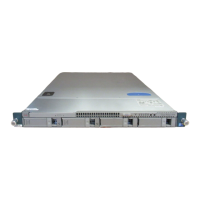26-2
Cisco Nexus 1000V Troubleshooting Guide, Release 5.2(1)SV3(1.1)
OL-31593-01
Chapter 26 VSI Discovery and Configuration Protocol
Problems with VDP
Problems with VDP
The following are symptoms, possible causes, and solutions for problems with VDP.
VDP Troubleshooting Commands
This section includes the following topics:
• VSM Commands, page 26-2
• VEM Commands, page 26-4
VSM Commands
You can use the commands in this section to troubleshoot problems related to VDP.
Symptom Possible Causes Solution
VDP packets are not
received by a leaf
switch.
The connected port on the
VEM does not have the
trunk dynamic port profile.
1. Verify that the connected port on the VEM has the trunk
dynamic port profile:
show interface ethernet slot/port
2. If the output of the show interface ethernet command does not
contain dynamic VLANs, configure the port profile for trunk
dynamic mode:
a. switch# configure terminal
b. switch(config)# port-profile name
c. switch(config-port-prof)# switchport mode trunk
d. switch(config-port-prof)# switchport trunk dynamic
VM is associated but it
is not pinging.
The encapsulation mode is
not native.
Verify that encapsulation mode is native and a valid VLAN value is
returned by the leaf switch:
module vem module_number execute vemcmd show bd
module vem module_number execute vemcmd show segment
segment_id
Command Purpose
show evb vsi interface vethernet
interface-number
Displays if the VDP association sequence is
complete for a vEthernet interface. Identify the
vEthernet port of the VM and use this command.
A VSI state of 3 means that it is associated.
See Example 26-1 on page 26-3.
show evb Displays configured information in the EVB
process.
See Example 26-2 on page 26-3.

